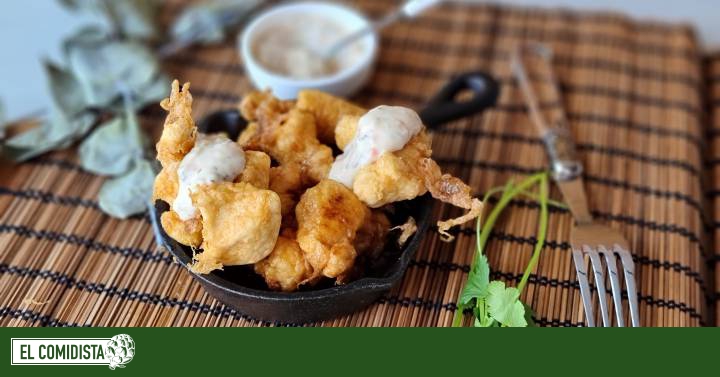Paella, bulls, olé and olé.
That is what the foreigners of Spain think;
that and some other
clueless
'
choriso
' that sneaks into the word on duty.
Something similar happens to most of us Spaniards with Japanese culture and gastronomy.
We think that everything comes down to
sushi
, but in the land of the rising sun there are many prefectures, cities and neighborhoods full of small food restaurants of all kinds.
In some areas, this translates into the sound of a sharp knife on a century-old stone, a sharp edge sinking into the flesh of a delicate fish, or a piece of wasabi root grating on an
oroshigane
(Japanese shark fin grater). In others, it's huge chunks of breaded chicken, sipped incessantly at tiny ramen stands and
carb-packed
okonomiyakis
. In the variety is the wealth and this precisely makes Japan one of the best restaurants in the world. Yes, yes, I said restaurants.
The success of Japanese master chefs lies in only one thing: specialization. While fusion and infinite menus proliferate in many Spanish restaurants, in Japan they have been following the maxim of learning a trade and developing it to the peak of perfection throughout their lives for hundreds of years. This makes every little corner, in every tiny dark alley, unique and special. Differentiating traits of Nao Chan, a small Japanese tavern in Kyushu where the chicken nanban recipe is said to have been invented.
This small island is located in the south of Japan and it was through there, in particular the port of Nagasaki, where all the Portuguese influences entered that would culminate in great recipes: to highlight, the tempura. Over the years, not only vegetables were coated, but also pork or the most consumed ingredient in this region: chicken. Inspired by a Portuguese preparation in which fish was marinated in onion and vinegar, Nao Chan's chef devised the recipe that we propose today.
It is a fried chicken made using the old
karaage
technique
.
Fried in oil, the result is tremendously juicy, as well as tasty.
As if it were a marinade, an Asian-style vinegar sauce is made -sake, soy, rice vinegar, ginger, garlic, cumin and sugar- with which the chicken is smeared and then dipped and dipped in a horseradish sauce with which it combines perfectly.
If it is left over, we can cover it completely with sauce and this way it will keep much longer: a hot and crunchy dish can result in a soft and fresh marinade suitable for the whole year, similar to Portuguese pickled hake.
Difficulty
Simple, but requires some Japanese finesse.
Ingredients
For the chicken
500 g of chicken thighs
Wheat flour for coating
1 egg
1 tablespoon of salt
1 tablespoon of pepper
1 tablespoon (or to taste)
shichimi togarashi
(or any spicy powder)
Mild olive oil for frying
For the nanban sauce
4 tablespoons of soy
4 tablespoons of rice vinegar (or apple, goes)
1 fresh ginger nut
1 clove garlic
1 pinch of cumin
4 tablespoons of sake (a smooth white wine is also good)
2 tablespoons sugar
For the horseradish sauce
3 generous tablespoons pickled horseradish (or wasabi if missing)
2 tablespoons sour cream
2 tablespoons mayonnaise
¼ carrot, chopped
1 teaspoon coriander, chopped
Juice of ½ lemon
A few drops of tabasco
Salt to taste
Pepper to taste
Preparation
To make the horseradish sauce: mix all the ingredients in a bowl and reserve in the fridge.
It can be passed through a blender to achieve a finer texture.
To prepare the nanban sauce: add all the finely chopped ingredients to a saucepan with the sauces and boil for a couple of minutes or until the sugar has dissolved and thickened slightly.
The goal is to get a liquid sauce but with a little body.
Strain and reserve.
Season the chicken with salt, shichimi togarashi -or some chili powder that gives it a little joy- and pepper.
Cut it into pieces of about 2x2 cm, which can be eaten in one large bite or two smaller ones.
Go through flour first, shake well so that there are no excesses and then through beaten egg, to which we can add a few drops of soy sauce.
Fry in mild olive oil, hot but not too hot: we need the chicken to brown on the outside but done on the inside.
It will be necessary to turn it from time to time taking care that they do not burn.
Let the fried chicken pieces rest on kitchen paper to absorb excess fat.
Mix the chicken with the nanban sauce and serve with the radish sauce.
If you make this recipe, share the result on your social networks with the hashtag #RecetasComidista. And if it goes wrong, complain to the Chef's Ombudsman by sending an email to defensoracomidista@gmail.com

